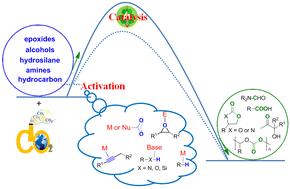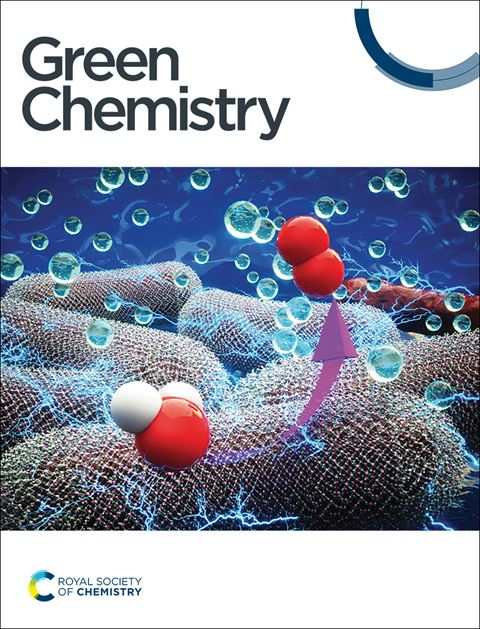Recent progress in CO2 conversion into organic chemicals by molecular catalysis
IF 9.3
1区 化学
Q1 CHEMISTRY, MULTIDISCIPLINARY
引用次数: 0
Abstract
The chemical conversion of carbon dioxide (CO2) into high-value chemicals or fuels is exceedingly attractive due to its green and sustainable features. However, practical technologies on scale utilization of CO2 are few, and nearly no new industrial processes on the topic have emerged over the years. The current bottlenecks, e.g., low efficiency and atom economy, seriously restrict the process development. In recent studies, the catalytic activation of CO2 and/or substrate has been revealed to play a significant role in the promotion of CO2 functionalization to valuable chemicals, including the representative reactions of epoxides/propargyl alcohols/propargylamines with CO2, multicomponent cascade reactions, N-formylation of amines with CO2 and hydrosilanes, and unactivated C–H bond carboxylation. Herein, recent significant advances (2017–2022) on the effective chemical fixation of CO2 through molecular activation or synergistic activation strategies in homogeneous systems are presented. The superiority of molecular activation in thermochemical catalysis is shown in a wide range of CO2 transformations. Through CO2/substrate activation and catalysis with well-developed metal or organocatalysts, valuable chemicals are successfully attained with great efficiency. The new progress will provide significant guidance to promote the effective and sustainable utilization of CO2.

二氧化碳分子催化转化为有机化学品的研究进展
二氧化碳(CO2)化学转化为高价值的化学品或燃料因其绿色和可持续的特点而极具吸引力。然而,关于二氧化碳规模利用的实用技术很少,多年来几乎没有出现关于该主题的新工业工艺。目前,低效率和原子经济性等瓶颈严重制约了该工艺的发展。在最近的研究中,CO2和/或底物的催化活化在促进CO2功能化到有价值的化学物质中起着重要的作用,包括环氧化物/丙炔醇/丙炔胺与CO2的代表性反应,多组分级联反应,胺与CO2和氢硅烷的n -甲酰化反应,以及未活化的C-H键羧化反应。本文介绍了在均相系统中通过分子激活或协同激活策略有效固定CO2的最新进展(2017-2022)。分子活化在热化学催化中的优势体现在广泛的CO2转化中。通过CO2/底物活化和先进的金属或有机催化剂的催化,可以高效地获得有价值的化学物质。这一新进展将为促进二氧化碳的有效和可持续利用提供重要指导。
本文章由计算机程序翻译,如有差异,请以英文原文为准。
求助全文
约1分钟内获得全文
求助全文
来源期刊

Green Chemistry
化学-化学综合
CiteScore
16.10
自引率
7.10%
发文量
677
审稿时长
1.4 months
期刊介绍:
Green Chemistry is a journal that provides a unique forum for the publication of innovative research on the development of alternative green and sustainable technologies. The scope of Green Chemistry is based on the definition proposed by Anastas and Warner (Green Chemistry: Theory and Practice, P T Anastas and J C Warner, Oxford University Press, Oxford, 1998), which defines green chemistry as the utilisation of a set of principles that reduces or eliminates the use or generation of hazardous substances in the design, manufacture and application of chemical products. Green Chemistry aims to reduce the environmental impact of the chemical enterprise by developing a technology base that is inherently non-toxic to living things and the environment. The journal welcomes submissions on all aspects of research relating to this endeavor and publishes original and significant cutting-edge research that is likely to be of wide general appeal. For a work to be published, it must present a significant advance in green chemistry, including a comparison with existing methods and a demonstration of advantages over those methods.
 求助内容:
求助内容: 应助结果提醒方式:
应助结果提醒方式:


